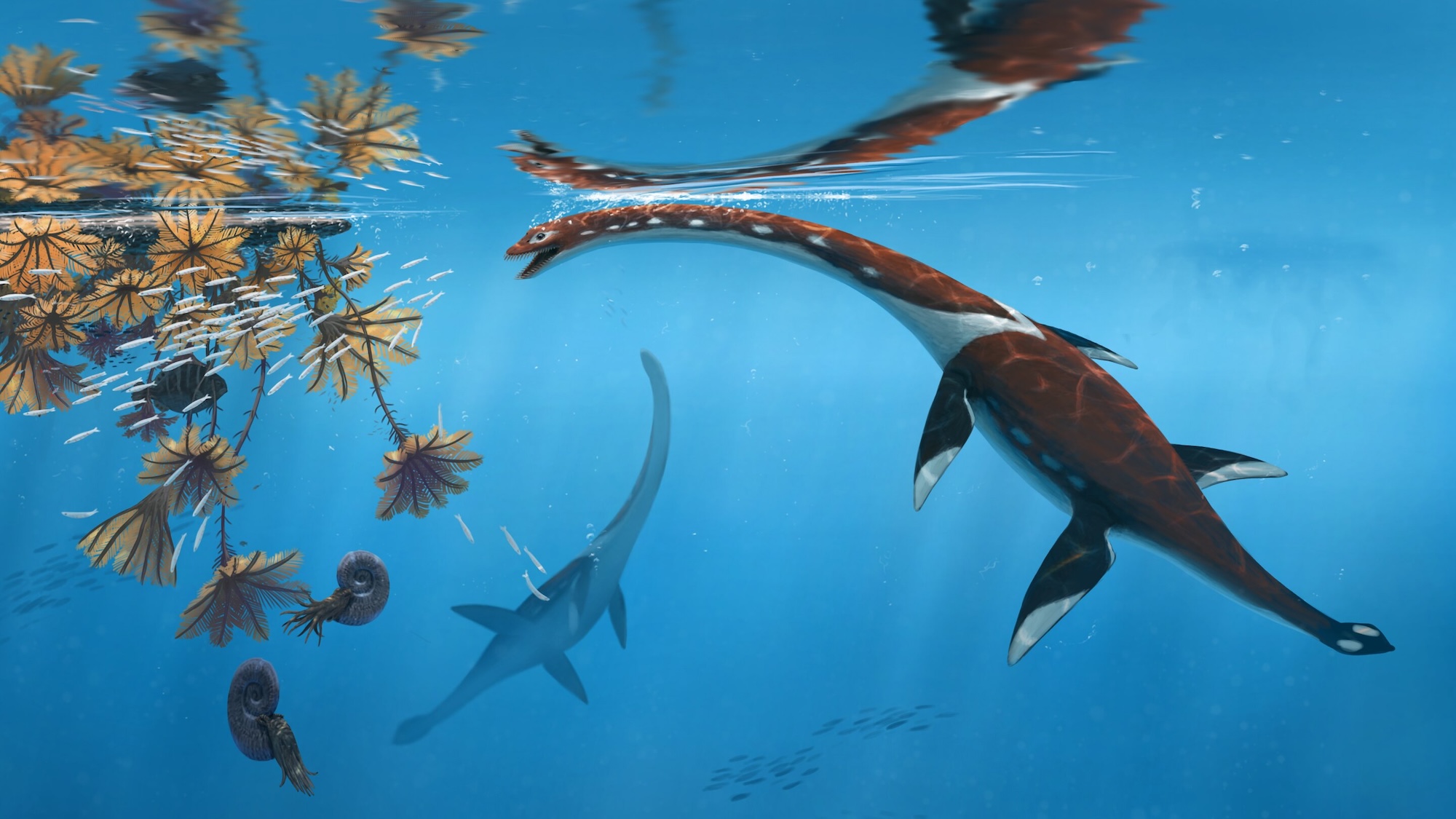Now Reading: Rare Long-Necked Plesiosaur Unearthed in Germany by Paleontologists
-
01
Rare Long-Necked Plesiosaur Unearthed in Germany by Paleontologists
Rare Long-Necked Plesiosaur Unearthed in Germany by Paleontologists

Fast Summary
- A paleontological breakthrough has uncovered a new species of plesiosaurs named Plesionectes longicollum (“long-necked near-swimmer”),after nearly 50 years of storage at the Stuttgart State Museum of Natural history,Germany.
- The specimen was originally discovered in 1978 in the Posidonia Shale fossil bed near Stuttgart and remained unexamined for decades.
- Published findings on August 4 via PeerJ Life & Surroundings revealed unique skeletal features distinguishing this marine reptile from othre known plesiosauroids. It belonged to the Early jurassic period (184-175 million years ago).
- P. longicollum measures approximately 10.5 feet in length, with a neck spanning 4.1 feet comprised of at least 43 vertebrae-a notably high count compared to similar species from its time. The skull is heavily damaged but other parts, including fossilized skin tissue, are well-preserved.
- This discovery adds vital context about marine ecosystems during Earth’s early Toarcian period-marked by mass extinction events such as the Toarcian Oceanic Anoxic Event driven by volcanic activity and significant ocean warming.
- Six species within plesiosaur lineages have now been identified from Posidonia Shale.
[Image captions included]:
1) Artist’s illustration depicting Plesionectes longicollum. Credit: Peter nickolaus View Image
2) Fossil skeleton as presented at Stuttgart State museum of Natural History View Image.
indian Opinion Analysis
The discovery of Plesionectes longicollum represents not only an advancement in understanding prehistoric biodiversity but also highlights valuable lessons for sustained efforts in scientific research and conservation practices that india could emulate while exploring its own paleontological heritage. India’s geological diversity holds untapped potential for uncovering vital fossils that may reveal evolutionary insights regarding ancient life forms.
Furthermore, insights drawn from Earth’s climatic history like the Toarcian Oceanic Anoxic Event-a mass-extinction triggered by volcanic activity and subsequent global warming-carry contemporary resonance given India’s vulnerability to climate change phenomena such as rising ocean temperatures and carbon emissions today.
While Germany adopts precise archiving systems enabling discoveries decades later, India could consider strengthening institutional frameworks including funding allocated toward museums or continuous evaluation schedules enabling breakthroughs within emerging scientific disciplines like paleontology.
India’s participation in global collaborative research woudl ensure it contributes actively toward piecing together more evidence about interconnected evolution patterns worldwide while safeguarding ecological integrity at home through informed policy alignment with essential planetary lessons derived historically.

























